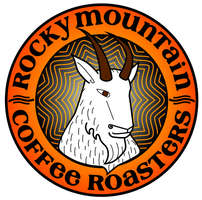
This is the AnZa, a home espresso machine from the minds at Montaag—a multi-disciplinary design firm that keep offices in both Norway and Berkeley, California. The team here has worked on a dramatic range of projects, from consumer tech devices and HiFi speakers to cafe interiors and futuristic ocean vessels. They also love coffee. And like most designers who love coffee, they eventually turn their interest and their talents to create the coffee device of their dreams. In this case, the result is an experiment in textures and materials that you don’t often see used for kitchen appliances.
The AnZa takes a shot at the traditional vernacular of espresso machine aesthetics, while still remaining functional. It looks like it would sit more more comfortably beside well-crafted furniture than the atrocity of most home appliances and that is a big part of its appeal. The contrast of the rough-edged concrete with white accents are finessed and balanced, while the industrial pole switches remind me of flicking on a guitar amp. So you can, you know, turn your espresso game up to 11 (I tried not to).


For the brutalist in me, I was immediately drawn to the concrete version of the AnZa when I first saw the early prototypes on design blogs a couple years ago, but it will also come in a more luxurious looking white Corian version with brass accents. For four years, the designers at Montaag have continued refining their prototype and began working with a friend who has extensive experience with manufacturing home coffee appliances to transform their exclusive hand-built novelties into a capable home machine that can be mass-produced and sold to design-loving espresso geeks.
I met with one of Montaag’s colleagues in Oslo earlier this year while they were testing out a functioning stainless steel model in the back room of Java Espressobar. Although the grinder being used was more advanced than most home users have access to (Mazzer), the resulting espresso and milk was on par with what I’ve had from other home espresso machines like the Rancilio Silvia and Brevillle Dual Boiler. Despite its capabilities, I stand by my recommendation that most people shouldn’t even bother with the complexity and cost of making espresso at home and simply find a great local shop who can meet their espresso needs with a $20,000 set-up and skilled baristas. But hey, everyone has their thing.


For more information on the technical specifications, I got in touch with Henrik Alfredsen at Montaag who shared a bit more information on the AnZa and what’s underneath their designer shells. The AnZa is only single boiler machine, so you will need to alternate between pulling shots and steaming milk, and it will retail for about $1500-$2000 after it has launched. Alfredsen said the machine will use a 15 bar ULKA pump and pressure gauge, and its stainless steel boiler will have electronic temperature control (DIP) with a fixed brewing temperature of 93C (199.4F) that’s positioned directly on top of the portafilter to avoid temperature loss. The AnZa will draw 1350W and comes with a standard sized 58mm portafilter. The flexible steam wand is controlled by an old fashioned-style faucet knob and it will have a removable tip in case you want to upgrade from the standard 3-hole version that’s included.

Once the AnZa has been finalized for mass production, the company will be taking pre-orders through Kickstarter in August (with a delivery date estimated for early 2018). Even though it can be incredibly risky in the world of expensive coffee equipment, crowd-funding seems to have become the de-facto method of launching new products for small companies. Although there have been a few coffee success stories, like the Acaia scales and Fellow kettles, it’s good to keep the risks associated in mind when funding this kind of large-scale manufacturing endeavor.
If the AnZa can live up to its claims, it will make a wonderful option for home espresso enthusiasts that are looking for a well-designed machine on a smaller budget, a category that doesn’t currently offer many choices. If you can’t afford a La Marzocco Linea Mini, Slayer Single Group, or a Kees Van Der Westen Speedster, it’s unlikely that your espresso machine will look good, let alone start many conversations in your kitchen, but the ambitious team behind the AnZa hopes to change that soon.
For more information about the AnZa and when it will launch, visit:
www.anzacoffee.com

